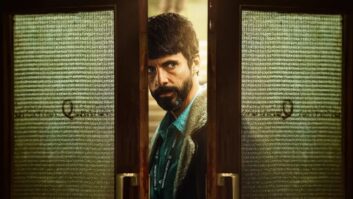
Fergal Ringrose talks to Pebble Beach MD, Peter Hajittofi.
FR: Why would a TV station want a channel in a box?
PH: Primarily for reasons of cost and simplicity. The ‘channel in a box’ concept works well for simple channels where space is at a premium: the setup is straightforward, cabling issues are minimal and channel launch time is reduced. It won’t replace everything in the short term however, as the presentation requirements of many broadcasters exceed the capabilities currently possible from such solutions.
FR: Will channel in a box solutions ultimately replace conventional systems?
PH: A qualified ‘yes’. For certain channels — where requirements are predictable and relatively simple — they will eventually predominate. The key factors are the controlling software, the file management capability, and the flexibility and range of the interfaces. The current crop of proprietary-based playout systems make it harder for the customer to get what they want, meaning that they have to compromise features for cost.
FR: What type of channel cannot benefit from this box approach?
PH: For the time being, channel in a box solutions cannot meet the presentation or workflow requirements of some complex channels. For example, the graphics, subtitling or DVE capabilities are not yet as sophisticated as you would get from discrete ‘best of breed’ products. Also, some channel in a box products struggle to cope with the specific demands of dynamic channels that have a lot of live content, for example rolling news, sports, and magazine programmes.
FR: Does low cost mean low performance?
PH: Not necessarily. You need to define performance: If you’re asking whether the viewer can perceive a difference, then probably not. However the customer needs to examine whether the box solution lends itself to the other workflows that exist in a broadcast facility: are they fully integrated or do they exist as little islands? If not then there will be performance issues in terms of operation, but eventually channel in a box systems will catch up. Ten years ago it would have taken years of development and lots of hardware to develop an MPEG video server. Now one developer can get basic playout+ingest going on one PC in a few months, and with better encoding quality. Clearly with IT hardware performance still going up and costs coming down, the picture is a rapidly changing one.
FR: How does PC-based playout rise to the HD challenge?
PH: Relatively easily — the only major issue is the number of channels required, as a lot of processing power is needed to handle the higher bit rates and complex HD graphics.
FR: How do you add processing power and memory without adding cost?
PH: From a manufacturer’s viewpoint you can’t, unless you reduce the number of channels in the box to offset the cost of the hardware. Fortunately though, processing power and memory is becoming cheaper over time.
FR: The ‘pay for what you need’ approach: is full integration of enterprise IT and broadcast media operation actually possible in this manner?
PH: In reality greenfield installations are rare, so broadcasters will usually be looking for an automation system to integrate into a mix of new and legacy equipment. Generally speaking, multiple channels in a box necessitate multiple operators, so saving money on the technology tends to be counter-productive if you have to employ more people to drive it. These boxes can’t do everything yet, so in many instances the so-called traditional route is still the best one. Here at Pebble Beach Systems we are looking at the option to provide lower cost solutions using standard IT technology for playout so that we offer our customers even greater choice in the future.





